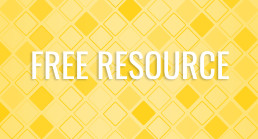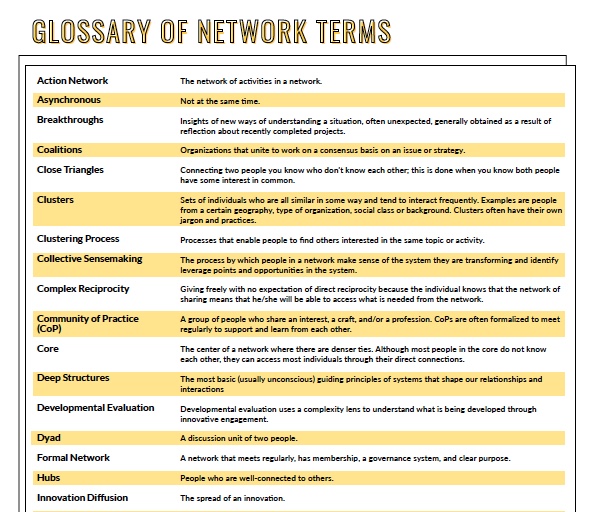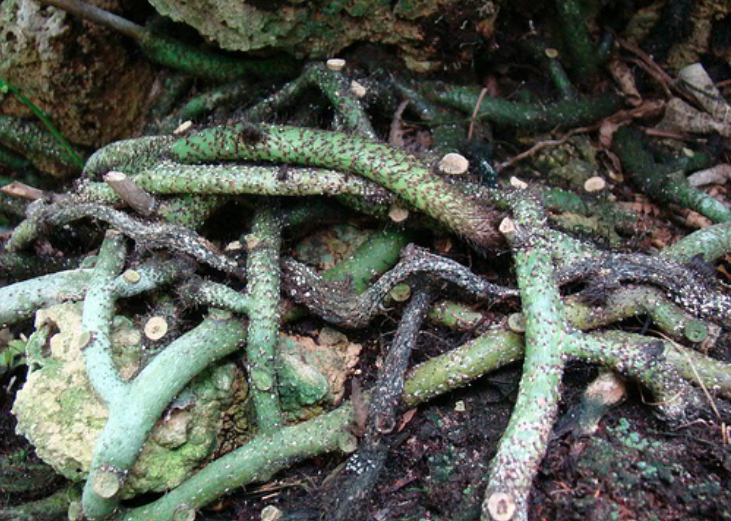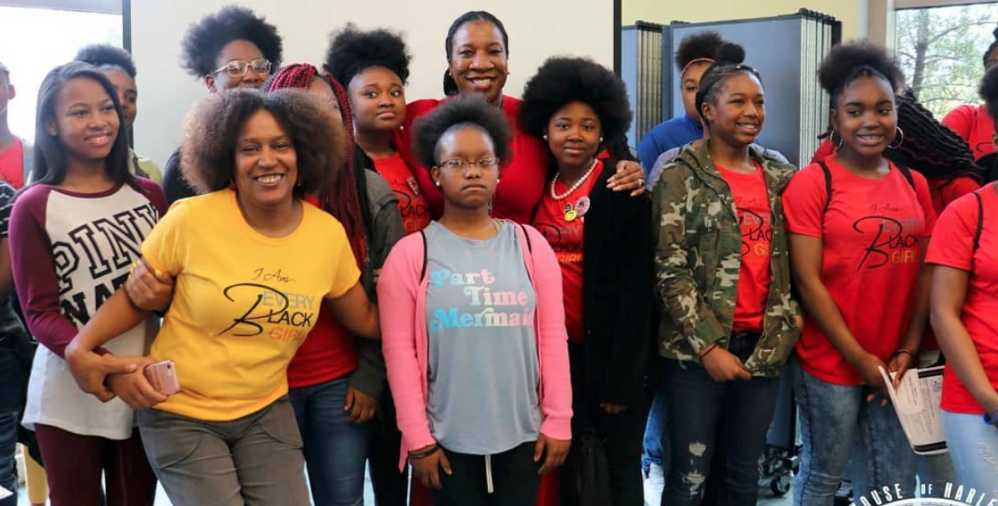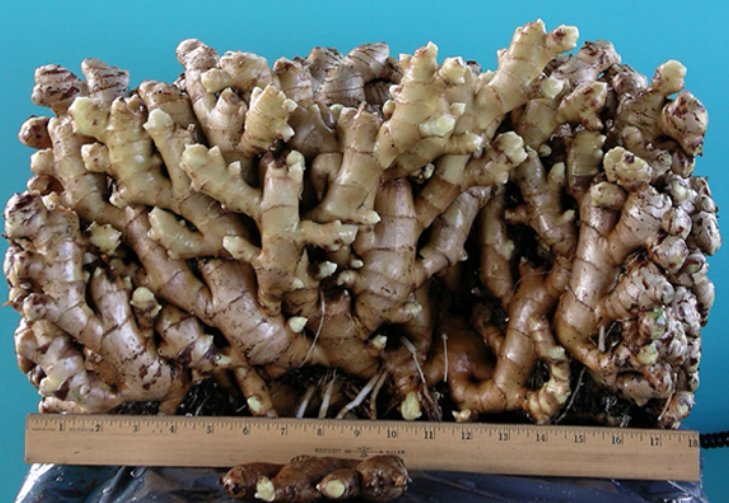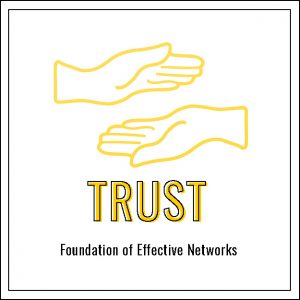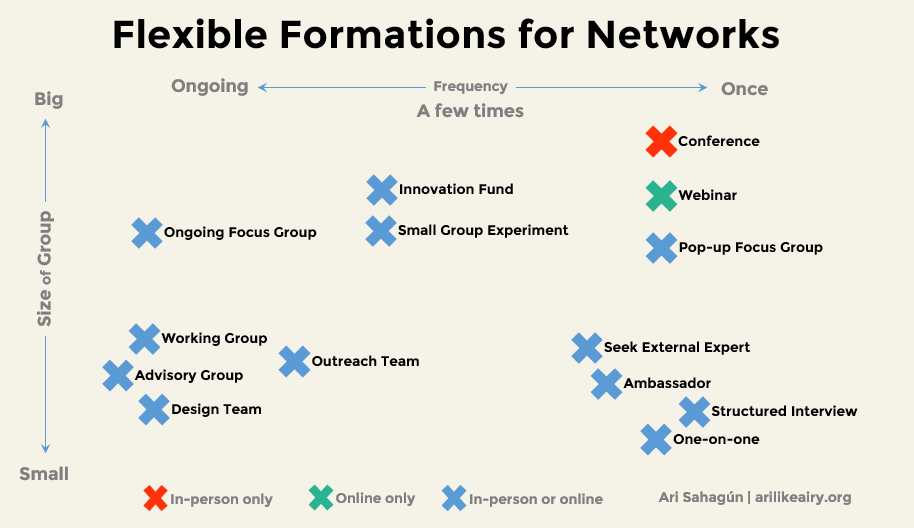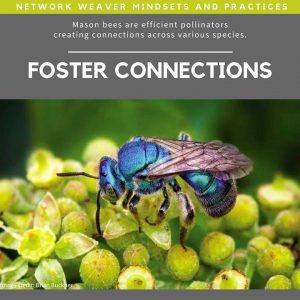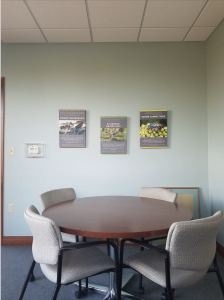Gratitude to the Network Weavers
My name is Adrian. I have practiced network weaving for about two years now and it has been such an adventurous journey so far. Being involved in social transformation and the vibrant communities that drive it really brings me alive. Yet, I am often very serious about the change I want to see in the world, because, let's be honest, it is really urgent to make a difference.
Sometimes that seriousness becomes too much for me and I need to balance it. Art is one of the ways, with which I may go beyond strategies and planning. I connect to the feelings that move me such as excitement, grief and joy. Poetry has the power to condense these feelings and my experiences and cut to their core.
Sharing this poem “Gratitude to the Network Weavers” with you who are practicing the art of weaving networks is an honor for me. The poem speaks of my deep sense of connection to our community of practice and my gratitude for all the learnings we go through and openly share. [ap_spacing spacing_height="20px"]
[ap_spacing spacing_height="20px"][ap_spacing spacing_height="20px"]
We encourage you to comment on this post so we can hear about your thoughts and experience.
[ap_spacing spacing_height="20px"]
featured image by: Federico Bottos
Communities of Practice for Network Weavers
The most effective way for people to build their skills as Network Weavers is to set up a Community of Practice –a group of people who share an interest in developing skills in a particular area. [ap_spacing spacing_height="10px"]
A Community of Practice encourages people to identify their learning needs and organize training, coaching, and peer support to meet those needs.
Participation in a Community of Practice is voluntary: we find that usually those eager and natural Network Weavers form a core group, but as they employ network weaving in their work, others see the benefits and become interested in building their skills as well and become more active.
A successful Network Weaver Community of Practice begins initially with some external training, since there are few highly skilled Network Weavers at this point. It’s usually effective to have a small core group of natural Network Weavers work with the trainer so that they quickly are able to conduct much of the training themselves.
Those individuals might have extra sessions to read and discuss resources that could deepen their understanding of networks and self-organizing so they are working from a strong theoretical base. The external trainer(s) could then focus on coaching this core group.[ap_spacing spacing_height="20px"]
Peer Assist
A core practice of a Community of Practice is the peer assist. This is where one individual, project group, or network has a challenge and seeks the thinking and advice of others in the Community of Practice. [ap_spacing spacing_height="10px"]
THE PROCESS IS:[ap_spacing spacing_height="5px"]
- The individual or group presents their situation and the challenge it is facing.[ap_spacing spacing_height="10px"]
- Those listening then ask clarifying questions which are answered.[ap_spacing spacing_height="10px"]
- Those listening then provide ideas, questions, and suggestions; they suggest sources of information or other cases that may help the challenge group.[ap_spacing spacing_height="10px"]
- The challenge group then responds.[ap_spacing spacing_height="10px"]
- The listeners talk about how this gave them ideas for their own network or project.[ap_spacing spacing_height="10px"]
- The entire group reflects on the session and insights gained.[ap_spacing spacing_height="10px"]
- The group determines whether there are any next steps or whether they want to continue the discussion in any way.
A peer assist can be 30-60 minutes long.
Here are some comments about the benefits of peer assists from participants in a recent Community of Practice:
“It was great to show my network how to build trust among our volunteers who are spread out statewide and may not have ever even met each other.”
“From my peer assist I took away the concept of planning in chunks --giving network participants a broad learning trajectory but doing detailed planning in small chunks in order to leave space for addressing emergent interests / needs.”
“I gained good ideas from my colleagues of ways to approach networks and a variety of traditional and social media tools to incorporate to enrich the experience for the entire network.”
“It gave me a better view/perspective on how other networks apply network weaving within their own agencies. I was also able to get additional resources and information how to better address the issues that arise from our network. I also love the personal stories and the friendships forged from the exercise.” [ap_spacing spacing_height="20px"]
Learning Popup
Another activity, called a learning popup, supports on learning about a specific topic. An individual identifies something that he or she wants to learn and invites others to join in a learning popup. They may need to bring in an expert, or one of the participants may have advanced knowledge in the area. The group meets, determines a learning agenda and sets up one or more sessions to complete this agenda.
It’s very easy to hold Communities of Practice on zoom.us, an easy-to-use video conferencing platform.
For further learning, see Abby Yanow's post on Best Practices for Communities of Practice.
[ap_spacing spacing_height="20px"]
We encourage you to comment on this post so we can hear about your thoughts and experience.
[ap_spacing spacing_height="20px"]
[ap_spacing spacing_height="20px"]
Glossary of Network Terms
All the network jargon got your head spinning? This two page handout has dozens of words commonly used in network circles and their definitions. Download and pass on to everyone in your network(s).
[ap_spacing spacing_height="15px"]
Sociocracy: Why, What and Who?
An excerpt from Chapter 1 of Many Voices One Song: Shared Power with Sociocracy by Ted J Rau and Jerry Koch-Gonzalez
Sociocracy is a set of tools and principles that ensure shared power. How does one share power?
The assumption of sociocracy is that sharing power requires a plan. Power is everywhere all the time, and it does not appear or disappear - someone will be holding it. We have to be intentional about how we want to distribute it. Power is like water: it will go somewhere and it tends to accumulate in clusters: the more power a group has, the more resources they will have to aggregate more power. The only way to counterbalance the concentration of power is intentionality and thoughtful implementation.
Power, like water, is neither good nor bad. In huge clusters and used against the people, power will be highly destructive. Used to serve the people and the earth, distributed to places where it can work toward meeting the needs of the people and the earth, power is constructive, creative and nourishing like an irrigation system.
One can think of sociocratic organization as a complicated irrigation system, empowering each team to have the agency and resources they need to flourish and contribute toward the organization's mission. We avoid large clusters of power, and we make sure there is flow. Water that is allowed to flow will stay fresh and will reach all the places in the garden, nourishing each plant to flourish. Sociocratic organizations nourish and empower each team to have the agency to flourish and contribute toward the organizations' mission.
Power does not have only one source. In that respect, power is different from an irrigation system. All members of the organization feed their own agency and resources into the organization, in each team. Everyone contributes their power and relies on each other's power. From there, power, and with it, resources, gets distributed into the whole and gets channeled to where the group wants to put their energy. Sociocratic organizations keep everyone's own agency and power intact and support people to make changes bigger than they could have made alone.
In order to achieve this, our sociocratic organizations differ from organizations with aggregated centralized hierarchical power in two ways:
- We distribute power more evenly. Those who come with less agency get support to step into more agency. Those who come with more sense of agency contribute toward the whole without diminishing anyone else's power. Teams doing work together are empowered to contribute. [ap_spacing spacing_height="10px"]
- We let power flow. Flow means the distribution of power needs to be adjusted and potentially changed over time. The sociocratic organization is adaptable and resilient.
Building a system that distributes power by empowering everyone requires thought and intentionality. That is what sociacracy is: the design principles of distributing power in a way that flows with life.
1.1 The values under sociocracy
What kind of world do we want to live in? The way we answer this question is: We want to live in a world where people support each other, consider each other and help each other meet needs. A collaborative world.
1.1.1 Organizations are living systems
Organizations are designed in a way that fosters our connection with each other and with ourselves, both within and outside of the organization. To effectively create connections, organizations need to be life-serving and all-embracing. Life-serving means that we want to foster organizations that work for everyone in the organization and hold care for everyone affected by the organization. No one and nothing can be ignored if we want to honor connection.
We want to support living organizations. Living systems can be on any kind of scale: a cell is a living system as it creates a membrane, forms an identity and interacts as a whole with its outside. Organizations are living systems: they interact with their outside (clients, students, consumers, investors), and their members on the inside interact as information, goods, and energy are being exchanged. A system that does not let the organization breathe like a living system will constrain and muffle its unique expression of life. Living systems have characteristics that we want to be aware of:
- Living systems form a whole and can act as a whole. For example, a human body is a complex system of smaller complex systems, but it is perceived and acts as a whole.[ap_spacing spacing_height="10px"]
- Living systems are interdependent with their context. There are no isolated systems. However, many people in Western cultures have been conditioned to think individualistically, as if we were separate from our context and could ignore our impact on the world around us.[ap_spacing spacing_height="10px"]
- Living systems are interactive and open (within limits). An organism that does not interact with its outside will not be able to survive. Organisms provide a (permeable) "membrane" between their inside and their outside. This is the basis of identity and capacity to act.[ap_spacing spacing_height="10px"]
- Within a system, parts are interdependent, which means they rely on each other to meet their needs. This both true for parts of a cell and it is true for a society.[ap_spacing spacing_height="10px"]
- Living systems are dynamic, they are not static. They change over time as they adapt and change constantly. Living systems can learn and heal. They are resilient.[ap_spacing spacing_height="10px"]
- Living systems are inherently ordered, in their own way. A forest, for example, has an order. So does an organization - living systems are defined by the fact that they create more order than is present in entropy of their surroundings. Organizations do exactly that: organize to exchange information and resources to meet needs.
Purchase Many Voices One Song HERE.
[ap_spacing spacing_height="20px"]
We encourage you to comment on this post so we can hear about your thoughts and experience.
[ap_spacing spacing_height="20px"]
featured image by: Mel Poole
Network Leadership
Network leadership (or what I call network weaving) looks like a rhizome. If you have a patch of bamboo in your yard, you know how hard it is to get rid of. If you chop down a stalk, in a few days a new shoot sprouts up to fill the space. This is because underneath the bamboo forest is a mat of interconnected pathways, called rhizomes, that connect all the stalks and move resources around to places where they are needed.
Rhizomes are a great metaphor for network leadership: network leadership is about working together to make sure that people in the network are connected in way that encourages flows of resources, information and support to every part of the network.
Network leadership is about noticing people or groups who are not being able to access resources and who have been marginalized by the culture of hierarchies, and encouraging them to initiate collaborative action.
Network leadership engages people to co-design new structures (such as Innovation Funds) that get financial resources flowing to those projects.
And network leadership creates space for learning and peer support through communities of practice, so that everyone is continually building skills and insights and breakthroughs constantly emerge from the learning processes.
The number one task of network leaders is to help others become network leaders.
Vivian Andersen (with yellow tee, below), the founder of Every Black Girl in Columbia, South Carolina, is one of my favorite examples of network leadership in action. In June I attended a gathering where she brought along six young teen girls and boys. These young people joined the small group discussions, sharing their thoughts with quiet confidence and brilliance because Vivian had made nurturing their growth and leadership a priority and showed them how to support each other.
The interesting fact about ginger (another rhizome), shown below, is that every knob of ginger contains all the nutrients to sprout another branch of ginger. If you broke off a piece of ginger and planted it, many new buds would pop out. Network leadership is like ginger: every network leader spends much of their time providing mentoring, listening, and support until everyone in the network sees themselves as responsible for creating a healthy, effective network. Leadership development in networks is all about increasing the flows of leadership capacity.
Four key roles that network weavers play to open these flows are:
- Connecting
- Coordinating and coaching collaborative projects
- Facilitating, convening and aligning
- Co-creating support structures
One of the best ways to help people understand these roles and to see that they are already network leaders is by taking the Network Weaver Checklist.
This checklist is great to give to people in your network at a face-to-face gathering. Have them spend 5 or so minutes taking the survey. Then have a chart paper (or 2-3 if the group is large). Using a marker, make a line down the center of the the paper and then one horizontally across from side to side. Mark the upper left quadrant with Connector, the upper right quadrant with Facilitator, the lower left quadrant with Project Coordinator, and the final quadrant with Guardian. Then have people put a red dot in the quadrant where they got the most 4s and 5s, and a green dot in the quadrant they would like to learn more about or do more.
Have them pair up with another person and talk about what they learned about themselves as a network weaver and what they would like to learn.
Then have the whole group notice the quadrant(s) where it is strong, and the quadrant(s) where there aren’t many people currently working. Notice which quadrant has lots of green dots – the network may want to do some explicit organizing of training in this are.
To download the Network Weaver Checklist: CLICK HERE
For more free resources and to sign up for the weekly Network Weaver enewsletter, visit www.dev.networkweaver.com.
We encourage you to comment on this post so we can hear about your thoughts and experience.
Trust: Foundation of Effective Networks
This article is a chapter from the Network Weaver Handbook with several worksheets you can use with your networks, projects and organizations.
They go together nicely with the blog posts Trust in Networks is Fundamental to Social Change by Christine Capra and Trust in Networks by June Holley.
[ap_spacing spacing_height="20px"]
Flexible Formations for Networks
[ap_spacing spacing_height="20px"]
Thinking about co-design embedded within a network presents additional challenges. Ideally, a design team creates many spaces to engage in co-design – both online and in-person – that allow for maximum input and creativity as well as respond to shifting levels of availability/capacity to participate.
What follows is a brainstorm I did with my sister, Licia, of the list of formations (groups within a network) that enable this. Furthermore, these formations can be organized from a central group - like a design team - or self-organized as they emerge from network members. [ap_spacing spacing_height="20px"]
[ap_spacing spacing_height="30px"]
| Formation | Definition |
| Advisory group |
Small group that lasts for the length of the project to advise and provide context for the design work; similar to design team but broader
|
| Ambassador |
One person does a one-on-one, then takes on work to do other one-on-ones, or takes information to broader group; “train-the-trainer” might fit here
|
| Conference |
Large group comes together with potential breakout groups, usually in-person
|
| Design team |
An ad hoc group that meets throughout the duration of the project (or sub-scope within it) to provide planning insight
|
| Innovation fund |
Selected group of projects that are funded for specific outcomes
|
| One-on-one |
A conversation between two people
|
| Ongoing focus group |
A representatively diverse group of people assembled to participate in a guided discussion about a particular product before it is launched, or to provide ongoing feedback on a political campaign, television series, etc.
|
| Outreach team |
Spreads the word about design process and reflections to rest of network
|
| Pop-up focus group |
A representative group of people that meets once to provide structured feedback on a specific topic
|
| Seek external expert |
Someone reaches out of core network for advice or thought leadership
|
| Small group experiment |
An ad hoc group that meets to engage with and provide feedback on a project, product, or part of it
|
| Structured interview |
A one-on-one with very specific outcomes
|
| Webinar |
An online lecture with potential Q+A
|
| Working group |
Small group of people who meet regularly with specific outcomes in mind; could be called a committee.
|
[ap_spacing spacing_height="20px"]
We encourage you to comment on this post so we can hear about your thoughts and experience.
[ap_spacing spacing_height="20px"]
Originally published at arilikeairy.org on March 26, 2018
[ap_spacing spacing_height="30px"]
Network Governance
[ap_spacing spacing_height="20px"]
Network governance is the idea that decision-making that is currently lodged in representative bodies such as congress or city councils can be shifted into self-organizing networks. This shift has the potential to massively increase participation and inclusion in policy making and, at the same time, ensure that policy making becomes more innovative, experimental, and capable of learning and transformation. Network governance has the potential to enable all of us to be part of co-creating a world that is good for all of us.[ap_spacing spacing_height="10px"]
Network governance can generate forms of governance that are equitable and inclusive, quick and creative in responding to issues and problems, and capable of tackling the complex and planet-threatening issues of our time.[ap_spacing spacing_height="10px"]
For example, food policy councils, at their best, are cross sector networks that include residents, government and educational representatives, non-profits and food related businesses. They research policy options for things such as rules regarding urban chickens, handling of food waste and support for community gardens, adapt these policies to their locale, and then present policy suggestions to city councils. It seems a small step to empower such councils to make the decisions themselves.[ap_spacing spacing_height="10px"]
Several new developments have made the shift to network governance possible.[ap_spacing spacing_height="25px"]
Self-organizing structures[ap_spacing spacing_height="15px"]
First, new self-organizing structures for network governance are being piloted. These include organizing decision-making into (usually small) work groups called circles: a small, diverse set of individuals who interact as peers and who care deeply about an issue take responsibility for a specific policy initiative - anyone can join the circle. The circle researches the issue and often engages many additional people in a co-design process to generate a draft policy proposal (through the use of technology which is discussed in the following section). Governance networks may have hundreds of circles operating at any one time, with many people involved in more than one circle. [ap_spacing spacing_height="25px"]
Innovative decision-making processes[ap_spacing spacing_height="15px"]
Then the circle uses an innovative decision-making process such as co-design, advice or consent. In the advice process, anyone who would be impacted by the decision has an opportunity (with a deadline) to give feedback on the proposal, which the circle tries to incorporate. The circle has final decision-making power, though if the proposal is controversial the time set to review the policy will be short. The idea is to try something out that is “good enough for now.” [ap_spacing spacing_height="20px"]
[ap_spacing spacing_height="20px"]In co-design or co-creation processes, diverse participants come together and design a new way of doing something, with decision-making woven into the design process, which then moves directly into a pilot phase. For example, a group of residents and organizations may join together to set up a new structure, such as an Innovation Fund that provides seed funds to community projects. This expands the definition of policy making to any collaborative act that contributes to community co-creation. Sometimes co-design is combined with advice or consent processes.[ap_spacing spacing_height="10px"]
Circles and advice/consent processes are currently being used in hundreds of innovative businesses and are now being piloted in a increasing number of networks.[ap_spacing spacing_height="25px"]
Helping participants shift to network values[ap_spacing spacing_height="15px"]
Network governance only becomes transformative when the underlying culture shifts. Network values/behaviors include interacting as peers, dismantling hierarchy and racism, embracing diversity and inclusion, letting go of control, becoming comfortable with uncertainty, seeing everything as an experiment, having space for reflection and learning. Network participants are much more likely to be able to make these shifts in the intimacy of circles, where they can track their progress on these through simple group surveys, then get support for change.[ap_spacing spacing_height="15px"]
The use of technology[ap_spacing spacing_height="10px"]
Next, the use of technology is making cross sector participation possible. Using zoom video conferencing sessions with breakout rooms for discussion combined with the use of google docs for gathering ideas, reflections and feedback makes involvement of many people possible. This can be combined with prioritizing and polling platforms such as sli.do and platforms such as loomio and participative budgeting platforms. In addition, innovators such as vTawain have used other platforms such as polis.[ap_spacing spacing_height="15px"]
Networks of networks[ap_spacing spacing_height="10px"]
The third development is the development of networks of networks for sharing, spreading and learning. These networks of networks are often focused on a specific issue area. For example, the hundreds of food policy councils in the U.S. have state networks, and the state networks are linked through a national network. Both state and national networks have frequent virtual (and occasional face-to-face) learning sessions where they share insights and strategies about specific policy areas and about other topics of relevance. Other networks of networks are perfecting communities of practice or learning clusters so networks are supported in their efforts to do system shifting work. [ap_spacing spacing_height="10px"]
Other networks of networks are convened around cross cutting issues or are bringing people from different (sometimes related) issue areas together for more systemic understanding. For example, Robert Wood Johnson Foundation has been convening networks working on different system elements it calls the Culture of Health (food access, housing, wellbeing, prison pipelines, etc). Other networks of networks are convening to learn more about networks and transformation or about racial justice and equity. These create pathways for viralness, large scale impact and transformation. For example, the use of zoom has spread through the nonprofit world at lightning speed, dramatically increasing the amount of collaboration happening.[ap_spacing spacing_height="15px"]
What would it look like?[ap_spacing spacing_height="10px"]
Imagine policy councils for every aspect of life: housing, health, recreation, education, etc. with most people involved in 2-3 circles at a time but providing advice on dozens or hundreds of proposals a year.
Most governance networks are likely to be local or regional. However, it would be exciting to explore how the networks of network might work nationally and internationally to solve huge, complex problems.[ap_spacing spacing_height="15px"]
How do we get there?[ap_spacing spacing_height="10px"]
Many networks already exhibit some but not all of the characteristics of network governance. By working as a catalyst network, we can help interested networks move to a more complete network governance form. We can create a network of networks interested in moving their networks to the next level and jointly develop a model of key elements of network governance, including case studies of network governance in practice.[ap_spacing spacing_height="10px"]
Also see https://docs.google.com/presentation/d/1I77C0T0UH5b0ZrMsb-QiIBjJkT1G1LlmotrQa1iK1jE/edit?usp=sharing
[ap_spacing spacing_height="25px"]
We encourage you to comment on this post so we can hear about your thoughts and experience. [ap_spacing spacing_height="40px"]
Network Weaver Mindset Posters
Ari Sahagun and Odin Zackman co-designed seven posters on Network Weaver Mindsets -- fresh with ecological metaphors. Feel free to use them in your work!
We'd love to hear your thoughts and comments below!
Here is an example of how they look printed and posted on a wall. These are from Freya Bradford of Rotary Charities of Traverse City.
[ap_spacing spacing_height="15px"]
What’s With The Network Weaving Thing?
[ap_spacing spacing_height="20px"]
I became a rabble-rousing, injustice-fighting, demonstrating, boycotting, marching, chanting, banner-carrying, strategizing, counter-culture activist early
– by age 13 I’d faced my first line-up of National Guardsmen un-accompanied by any adults who knew me.
By my mid-20’s, though, I was utterly disenchanted. The issues were still real & unacceptable, but activism had proven ineffective. Nothing ever really changed.
The direct-attack approach just burned through energy and resources, without getting anywhere near the roots of the problems. We were all too far outside the systems that needed to change – those systems were too well-protected.
Activists were hysterical misfits attaching themselves aimlessly to random causes, more for the adrenaline & thrill of disruption than out of commitment to anything in particular. I tired of the endless power-struggles, and people projecting their own unacknowledged emotional problems onto larger social issues (which, you know, maybe I was still doing a little of that myself. . .).
Plus, by then I was a single mom & needed to support my kid. I settled down, quit tilting at windmills and became pragmatic. Well, I tried to anyway.
Ultimately, I discovered that activists were no more dysfunctional than other groups – they just had fewer carrots & sticks to keep things focused was all.
My need to make things better shrank down to the confines of my employer organizations & specific work-related initiatives, but even so, change was hard work. And regardless of context, carrots & sticks seemed crappy substitutes for passion, intrinsic motivation and vision.
[ap_spacing spacing_height="20px"]
Some questions can’t be avoided
So the question still was – how can groups of people work together more effectively to solve problems – without coercion? And without the financial reward that imposes it’s own priorities, and inherently skews solutions toward the market, whether market solutions are appropriate or not? Or maybe more to the point – how do you access the passion & motivation & vision inherent in all would-be change-agents in a way that helps them fulfill their own personal missions while still moving toward larger collective goals?
I contemplated those questions so long that I decided to get a Master’s Degree in Organizational Leadership – and discovered Wheatley, Senge, Bohm, Scharmer, Kahane, Meadows, Semler, Argyris and so on & so on & so on.
I found a whole new world of systems thinking, collective wisdom, dialog, self-organizing systems, complexity – it all was exactly what I’d been missing all those years. I was in intellectual heaven, completely engrossed. I felt like I’d found the key to the Universe.
At first I tried to apply what I was learning in my work-place – not so successfully. Eventually I realized that profit-oriented hierarchies aren’t the best fit for the approaches I was interested in. I wasn’t positioned to change the secretive, hoarding, clinging, fearful, linear, bottom-line, controlling minds at the top – and eventually realized it was stupid to even want to – just more tilting at windmills.
I moved on to experimenting in the real world – in loose groups gathering around causes & ideas, collectives trying out new ways of working together, etc.. This was a better fit, a more conducive context. But still, collectivity & change were hard.
There were all these lovely new methodologies – Appreciative Inquiry, World Café, Open Space Technology, Dialog, Theory U, Human Systems Dynamics, Scenario Planning, Theory of Constraints, Design Thinking, etc., etc. – most of which, though wonderful, seemed best suited to more bounded & narrowly defined situations. Or are applicable to smaller groups, or larger groups. Or less diverse groups, or ones with smaller gaps in privilege & equity, Or they require a ton of time, money, expertise and planning. Or they’re so conceptual & abstract that people mired in real-world, right-now issues just can’t focus on them long enough to give them a chance. Or else . . .
[ap_spacing spacing_height="20px"]
I’d found a key, but for which door?
I wasn’t looking for the keys to corporate change – I was stalking change & emergence in self-selecting groups attempting to make huge differences. I was back to my activist roots, wanting to solve the big, big problems, like poverty & ecological sustainability, white supremacy & urban livability & climate change. Big overlapping, complex problems that require collaboration & passion across all kinds of differences. Problems that demand more than one vision, myriad visionaries, multiple strategies & that won’t oblige central command & control.
And the thing is – the answers are still emerging. There’s a ton of good work going on, but everyone is still learning. There’s no one size fits all. We’re not ‘there’ yet (if ‘there’ even exists anymore, or ever did).
Anyway – all of that above is my long-winded way of telling you my bona-fides, my credentials – why I feel qualified to say what I’m going to say next. Which is:
Network Weaving is darn close.
So, if Self-organizing is the key, then Network Weaving is the lock and the door & the turning bolt & the handle & the hand & the doorframe & the. . . you get the point. I don’t mean it’s the only key, or the be-all or end-all. But it’s scalable, flexible & fits a lot of contexts.
I wouldn’t have suspected that.
[ap_spacing spacing_height="20px"]
I didn’t start out all that psyched about Network Weaving.
It just seemed like another relevant but small piece of the puzzle – of course you need networks, but there’s a lot more to it than that. . . (I think I was still enamored of complexity – I wanted it to be more sublime).
But no – I got to Network Weaving through my background in data analysis, gathering & visualization – I mapped some networks. For money. It was just another opportunity to fiddle on my computer, mess with spreadsheets & make something pretty (a tech-y version of pretty that is) – which is one part of what I’ve done for a living for awhile now.
But it did amplify, in my own mind, the one thing that became crystal clear in all my earlier experiments – just inviting a lot of folks & getting them to the table isn’t enough. Even with all those beautiful methodologies.
If the quality of the connections isn’t high enough to get meaning & value flowing – you just have a lot of happy-talk. And disenchantment. And no change. In spite of shared vision & simple rules & all those other important components.
It all still comes down to the foundation – the interdependence that bonds us together.
If the human bonds at the core of the system aren’t strong & trusting, not much new will happen. And Network Weaving is all about creating, not just connections – but connections that can carry weight. It’s about meaningful connections, resource-sharing connections, mutual-aid & mutual-growth & mutual-survival connections.
So Network Weaving as the way into Self-Organizing just kind of grew on me.
And network mapping as the way into Network Weaving started to seem inevitable – work I had to do.
And I don’t mean just Social Network Analysis (SNA). No, SNA was just another game for data-dweebs. Used in organizational decision-making & marketing & fundraising & influence peddling – also good for researching disease transmission and terrorist cells and other scientific purposes.
No – I quickly became interested in a specific application of Social Network Analysis, and only as a small piece of what I imagined was possible through interactive network mapping.
What became meaningful & exciting to me was the potential for self-organizing & transparency & real resource exchange (just like in a living system) that an interactive, online network map could facilitate. Interactivity promised to enhance the conditions necessary for self-organizing. And while I was trying to figure out cheap ways of making the tools I had at hand more interactive, Kumu.io made a huge leap in that very direction & provided the perfect platform for what I was dreaming up. Which clinched the deal, that was my entry point. A method I could finally get behind & settle into. It was time to absorb everything I could about the Network Weaving methodology.
And, as I did, I started to see that Network Weaving contains the skills, the process & the methods to help self-organizing come into being (without bogging down in theory).
Network Mapping is just one part of the whole picture – the part my husband Tim & I are especially qualified to help with. But I have learned enough about self-organizing & systems & complexity & human trust and passion and intransigence, to recognize that Network Weaving, combined with a good interactive network map designed around your particular network’s specific needs, has the potential to break through all that ineffectiveness that frustrated me about back-in-the-day activism.
It’s not the only or the final answer, but I don’t think you can go wrong to include network weaving & a network map in your collective change efforts. And the purpose of this blog is to help with that.
What’s your experience with Network Weaving? And how could I help enable your network weaving & mapping practice? Please comment below.
[ap_spacing spacing_height="20px"]
originally published at Greater Than The Sum on June 24, 2015

